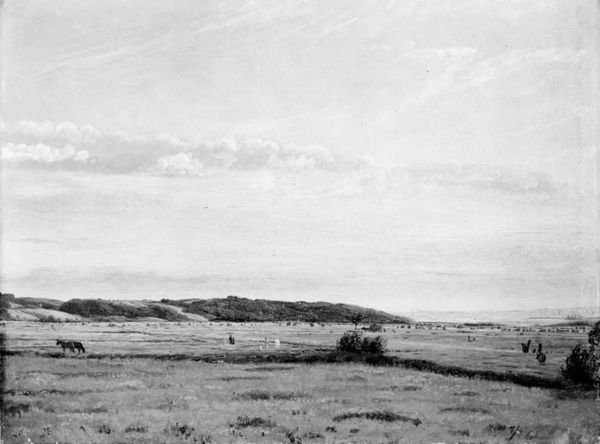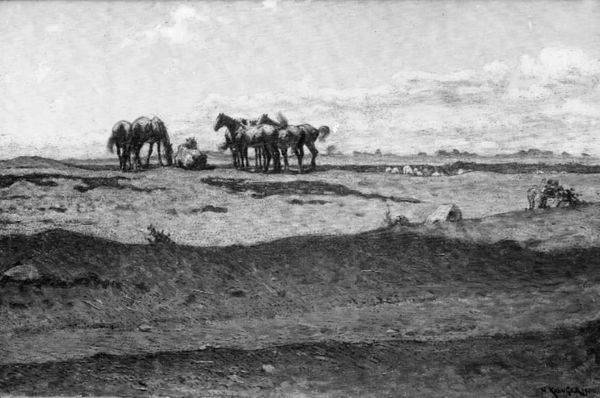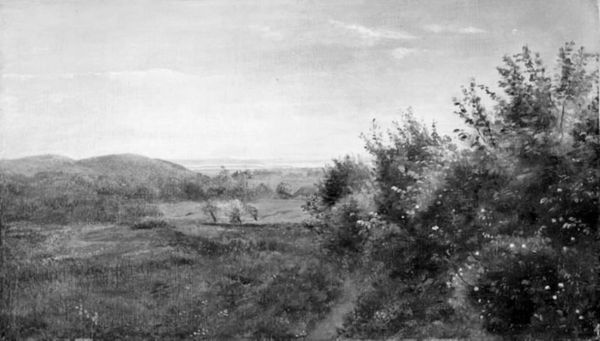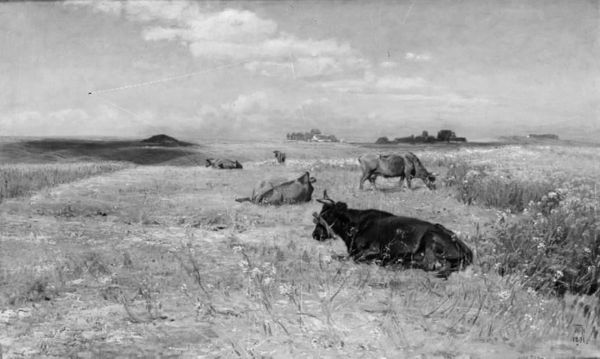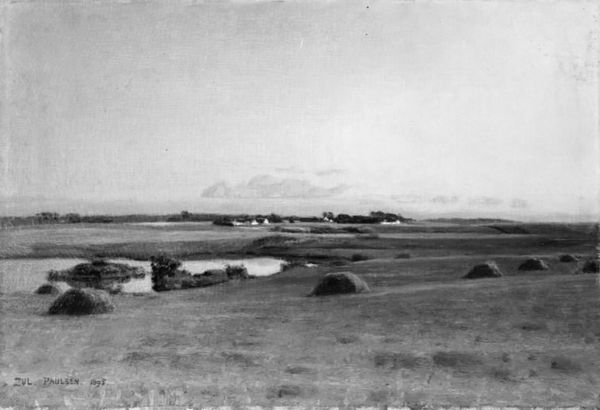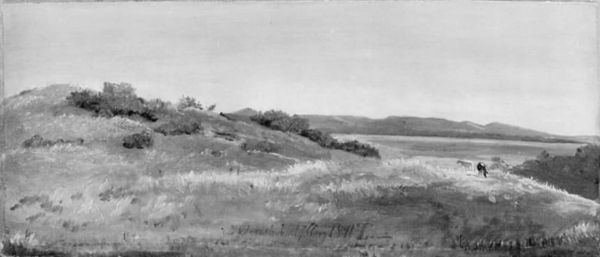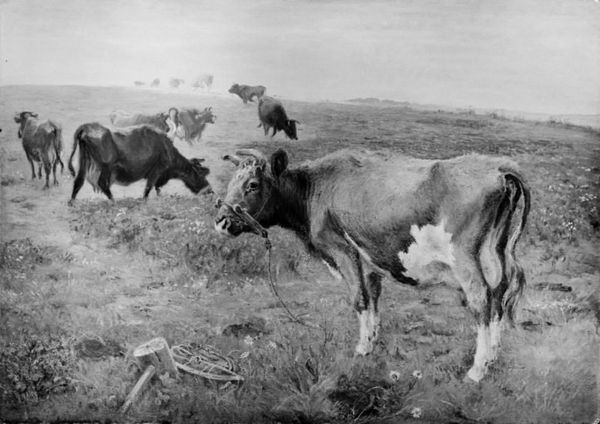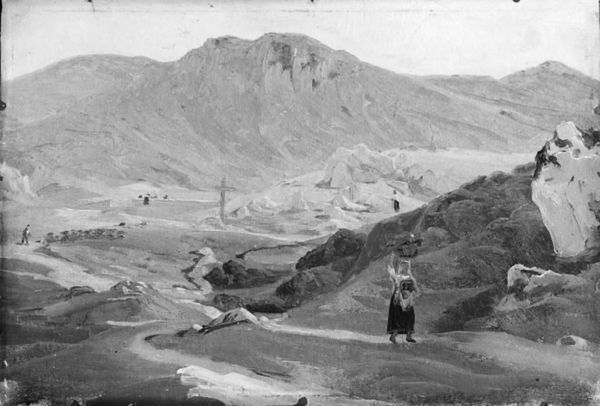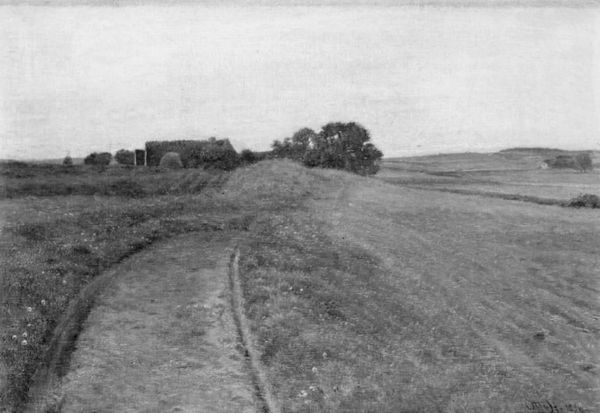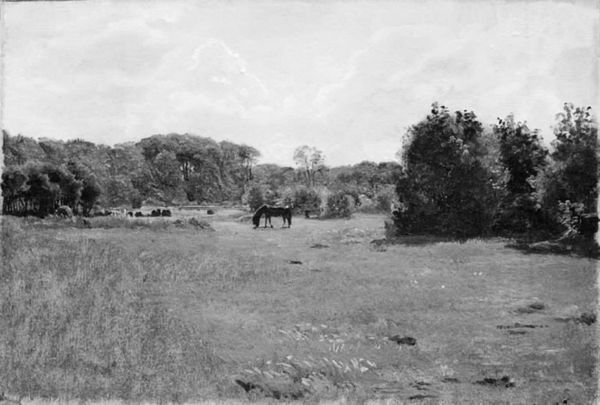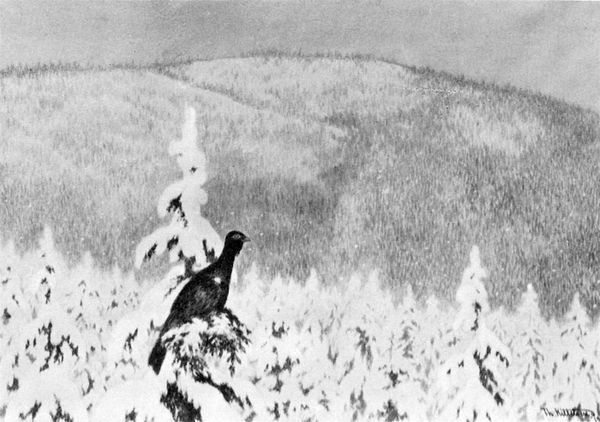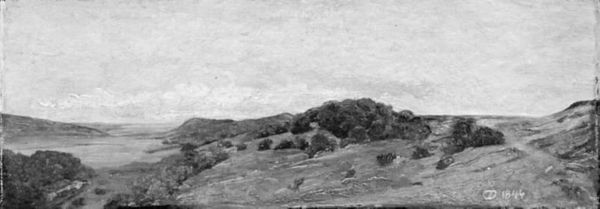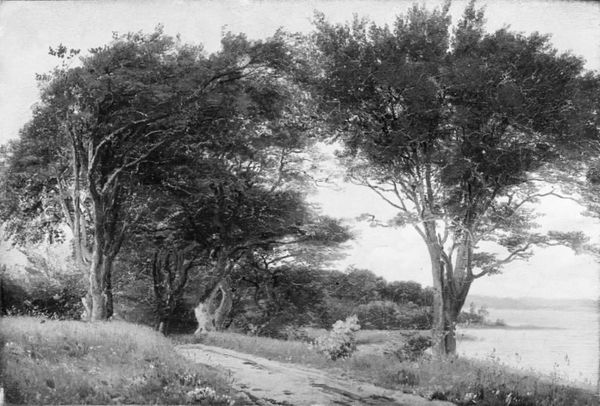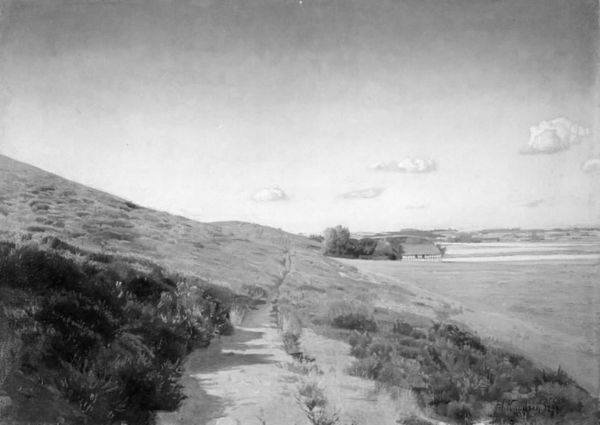
Dimensions: 309 mm (height) x 606 mm (width) (bladmaal)
Editor: This is "Autumn Day," a charcoal and pencil drawing created in 1902 by Carl Wilhelmson. The countryside scene has a very serene feel. How do you interpret this work, especially considering its historical context? Curator: Looking at Wilhelmson's "Autumn Day," I am immediately drawn to its representation of rural life, not simply as a picturesque scene, but as a commentary on land, labor, and the changing relationship between humans and nature in the early 20th century. What do you observe about the human presence in this landscape? Editor: Well, it's interesting; it's there in the form of the grazing cows and suggestion of the farm buildings in the distance. But overall, I find its depiction is so subdued and unobtrusive. It is almost a nostalgic look at the land. Curator: Exactly. Consider the broader socio-political context. The early 1900s were a time of rapid industrialization and urbanization. For Wilhelmson, as for many artists, representing the rural could be read as a political act—a form of resistance against the alienation caused by modernity and potentially a symbolic upholding of tradition. Does the medium, charcoal, perhaps play a role in this impression? Editor: Yes, I see that. The monochromatic tones and the texture add to that feeling of historical weight. It's not just a depiction of the countryside, it's a statement about it. Curator: Precisely. And this subdued palette may lead us to consider the artist's intentions about his subjects. He chose charcoal as a very conscious act. The very dark hues that charcoal creates have very different symbolic weight than any other medium. We may assume, therefore, that he had some deliberate meaning in mind when executing "Autumn Day". So, what resonates most with you now after this deeper dive? Editor: I think I'm seeing how an image, seemingly simple on the surface, can carry layers of meaning related to societal shifts and cultural values of its time. Curator: Indeed. It becomes an invitation to reflect on our own relationship with the land today, our history and where we are headed.
Comments
No comments
Be the first to comment and join the conversation on the ultimate creative platform.
